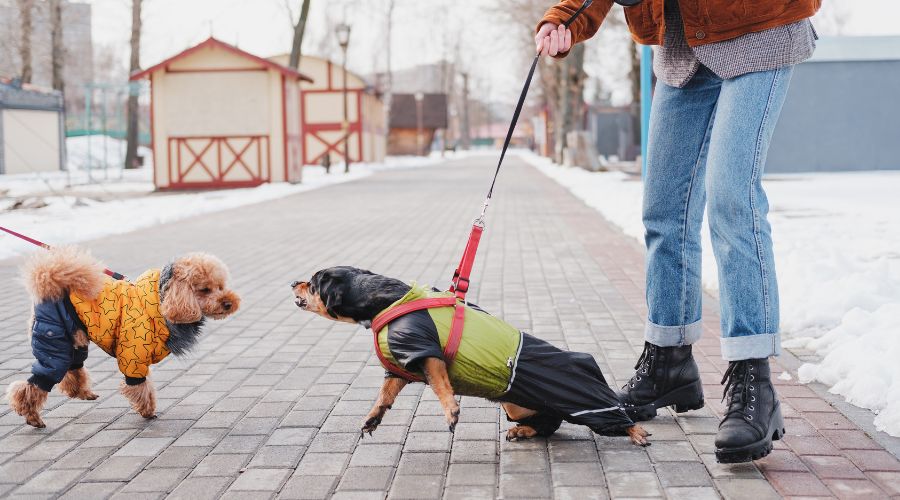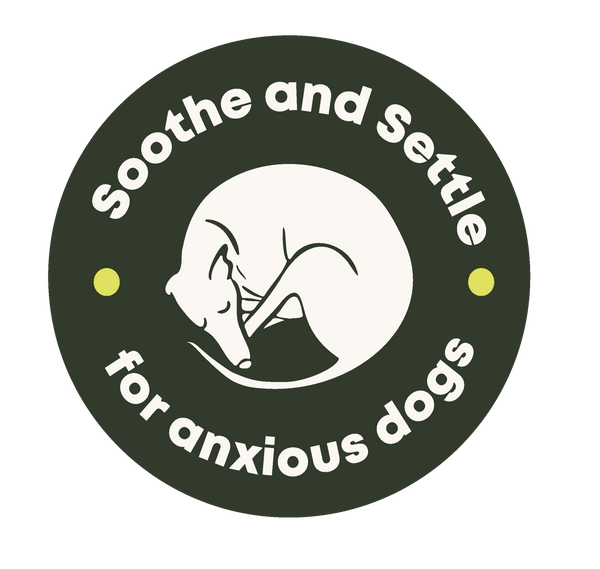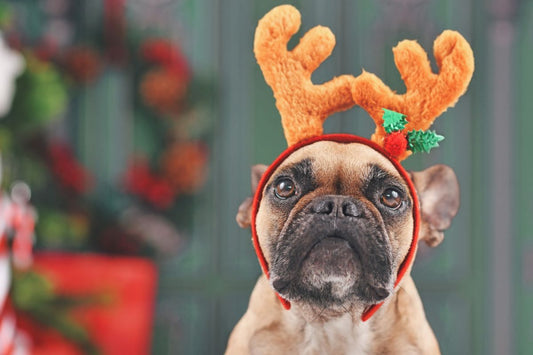
How to Calm Down a Reactive Dog: 6 Tips and Practices
Share
Does your furry friend react strongly to other dogs while you’re out on walks, strangers, or even certain sounds? You may have a reactive dog on your hands. If this sounds familiar, please do not worry - approximately 1 in 4 dogs are classified as ‘reactive’, and with the right techniques, many can learn to stay calm and focused.
And this is where we can help.
In this blog, we’ll uncover exactly what it means for a dog to be "reactive" and explore 6 practical tips to help calm them down, such as desensitisation, training and even dog earmuffs… yes, they’re a real thing!
What Is Considered a Reactive Dog?
To put it simply, a reactive dog is one that overreacts to certain stimuli, such as other dogs when on a walk, people, loud or sudden noises such as thunder or fireworks, or fast-moving objects such as cars or people on bikes. Some dogs may also react intensely to people they don't know, which can manifest as barking, hiding, or avoidance.
Unlike aggressive dogs, reactive dogs aren't necessarily looking to cause harm.

Reactive dogs behaviour often stems from fear, frustration, or overstimulation, and may behave in ways like barking, lunging, growling, whining, or pacing when exposed to these triggers.
Now we know exactly what they are and the symptoms associated with them, let’s dive into the various ways you can calm down a reactive dog.
6 Ways to Calm Down a Reactive Dog
6 ways you can calm down a reactive dog include:
1. Create Distance Between Your Dog and Their Reactive Triggers
First things first, try and understand exactly what triggers your dog, and make an effort to really distance your dog from these triggers. This will naturally help to reduce the intensity of whatever is causing their reaction, and reduce their feelings of threat.
When a dog perceives something as a threat or is overwhelmed by something, giving them space allows them to feel safer and reduces their immediate urge to respond with barking, lunging, or other reactive behaviours.
A good example of this is on a walk. If your dog is reactive around other dogs, try avoiding them or simply increasing the distance between them. For instance, if you’re walking your dog and see another dog approaching, crossing to the other side of the street or taking a different route can prevent a reaction.
For dogs that are particularly sensitive to sounds (like fireworks or thunder), moving them indoors, to a quieter room, or even into a bathroom can provide enough sound dampening to help calm them.
2. Invest in a Pair of Dog Earmuffs
Noise is a common trigger of reactive dogs, such as fireworks, thunderstorms, or general sudden loud noises.
One of the easiest ways to reduce the volume of these noise triggers is to purchase earmuffs especially designed for dogs.
Designed to be worn as a close-fitting head covering, they limit external noises and in turn reduces the stress that comes along with it. This helps to create a much more peaceful environment, making it easier for your dog to relax.
At Soothe and Settle, we offer a wide range of earmuffs for your furry friend, or as we like to call them ‘Hush Muffs’.
 Available in a range of colours and patterns, from cow print to leopard and navy blue to tartan, these hush muffs are especially designed to calm reactive dogs when they’re faced with loud noises, fireworks, thunderstorms, travel, vet visits, training sessions, social events and other situations where your dog needs additional comfort.
Available in a range of colours and patterns, from cow print to leopard and navy blue to tartan, these hush muffs are especially designed to calm reactive dogs when they’re faced with loud noises, fireworks, thunderstorms, travel, vet visits, training sessions, social events and other situations where your dog needs additional comfort.
Not 100% sure which size to choose? We are more than happy to help. Simply send us your dog’s measurements via this enquiry form on our website. Alternatively, use our live chat for answers to our most frequently asked questions or to contact our team.
3. Practice Desensitisation
This one might take a bit more time, but desensitisation is a great way many dogs have overcome their reactivity and fear of specific triggers. This is the process of gradually exposing them to their key triggers at a low, controlled intensity, allowing them to build positive associations and feel more comfortable over time.
For example, if your dog reacts to other dogs, begin by exposing them at a distance where they feel safe, then gradually decrease the distance as they get more comfortable.
4. Try Calm Training Exercises
Another exercise you can try to help calm your reactive dog is ‘calm training’, which is a try of training that redirects their attention and helps your dog focus on you, rather than the trigger.
The "look at me" is a popular focus command, which teaches your dog to make eye contact with you on command. For example, if you’re walking your dog and they start reacting to another dog, using “look at me” helps them shift their focus back to you, reducing their reaction.
Another helpful command in a triggering situation could be "sit" or "lie down", which can help a reactive dog stay calm and focused. If you perhaps reward the command with a treat and a head scratch, it teaches them that calm behaviour in the presence of the trigger is rewarding.
5. Ensure Your Dog Is Exposed to a Calming Environment
Ensuring your dog spends time at home in a predictable and calming environment are great for reactive dogs.
If you need to make any household changes, such as closing curtains on windows that look out onto roads or ensuring your dog’s safe space is at the back of the house away from passers by and noise, do so.
 If you haven’t done so already, create a safe, quiet spot in your home for downtime, to help your dog decompress and feel secure.
If you haven’t done so already, create a safe, quiet spot in your home for downtime, to help your dog decompress and feel secure.
6. Try Using Counter-Conditioning Communication
Lastly, you could try counter-conditioning techniques whereby you pair the trigger with something positive, like treats or a good ol’ ear scratch.
Over time, this type of communication with your dog can help them associate the trigger with good things, reducing their reactive behaviour. You can call it reverse psychology in dog terms!
And there we have it! We hope these 6 tips and practices give you a helpful foundation for calming down your reactive dog, whether it’s on a walk, in the car or at home. Remember, every dog is unique, and it may take time, patience, and consistency to see lasting improvements.
For a quick fix, shop our complete range of Hush Muffs, uniquely designed to help your pup feel secure and relaxed in noisy or overwhelming environments especially around fireworks season coming up!
And for more top tips and insights from our experts, check out our regularly updated anxious dog blog.
Check out our wide collection of anxious pet products, as well as our clearance stock, here.




